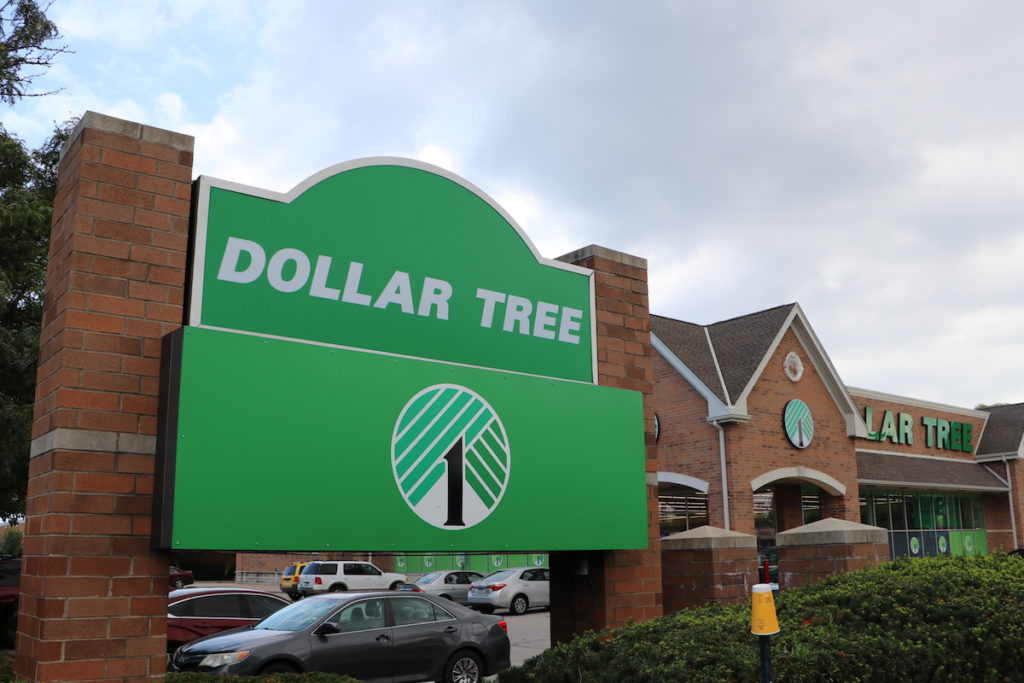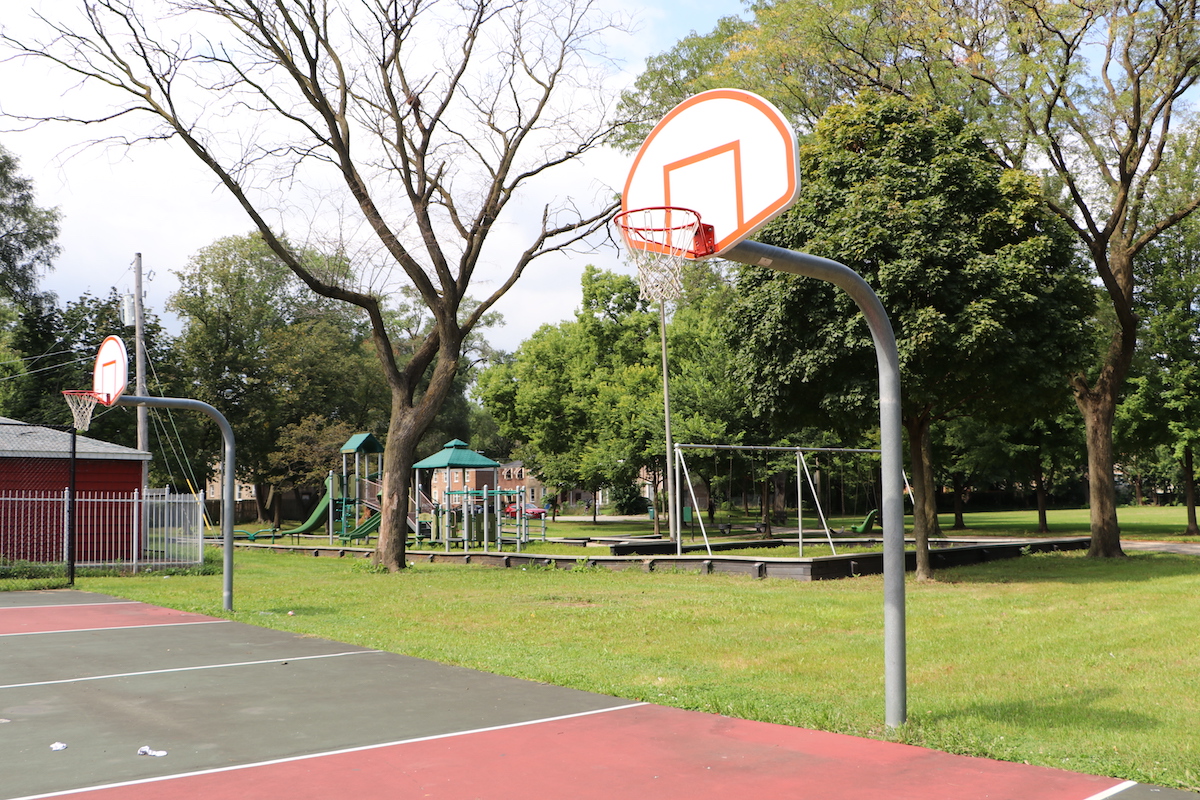- Best Post-Industrial Suburbia
- Best Reopening of Store Closed in 2020: Dollar Tree at 95th and Jeffery
- Best Parks that Blend in With Nature: Merrill, Pine, Bradley, Trumbull, Luella Parks
The cultivation of a higher-quality life is and has always been a priority for this quiet community. Located in the corner pockets of the 7th and 10th Wards, Jeffery Manor and South Deering shine in a monochrome of manicured lawns, uniform property lines, and smoothed pavement. Accompanying these beautiful neighborhoods is the business district flowing down 95th Street, especially between Stony Island and Clyde avenues. For many years, the community was overflowing with businesses like the popular amusement park Funtown, a Courtesy hardware store, a Hillman’s grocery store, a roller rink, and a bowling alley, just to name a few. People who have settled in South Deering and Jeffery Manor remember the energy and liveliness that the business district provided for the community.
Residents like South Deering Manor Community Association president Echelle Mohn express frustration that media coverage of the neighborhood doesn’t focus on the active community work going on to improve and maintain South Deering and Jeffery Manor and the culture that has been upheld in this community.
Yvonne Bass, a resident of fifty-one years, recollects moving to South Deering because of safety issues in her previous neighborhood. South Deering became her quiet haven, as many other residents claim the neighborhood to be. A former resident, this section’s co-captain Paula Owens-Lea, emphasizes how everyone in the neighborhood greets and interacts with each other, neighbors are good company, block clubs are prolific, and you never pass someone without a hello. This was and remains the culture of South Deering and Jeffery Manor. She says that the community helped her build her own sense of the word, as she would go on to live in many other neighborhoods and nothing would mimic the feeling of community Jeffery Manor provided her.
Over the years, businesses closed because of lack of resources or were even destroyed in the summer of 2020. The South Deering Manor Community Association and 7th Ward Alderman Greg Mitchell have been determined to revitalize the community. They consistently host monthly community meetings and community events to uphold the circulation of information. Jeffery Manor is anticipating the opening of a new produce store that will also transition into a coffee shop for the community, and welcomes the reopening of Dollar Tree in a new and bigger location. This community is working to bring businesses and economic prosperity back. Residents of South Deering and Jeffery Manor always prevail.
Paula Lea, the neighborhood captain of the section, was raised in Jeffery Manor and continues to reside on the South Side. Her passion is mentoring youth—when you encourage a child, you empower the future. Paula serves as president of the Local School Council at her daughter’s school and aspires to start a NFP where the mission will be to provide computer skills for all ages with a focus on seniors.
Renaissance Atunse, who helped write the introduction and a couple other blurbs, is from the South Side and is a multi-talented artist studying at Columbia College Chicago, where he is pursuing a major in acting with a minor in playwriting. He plans to continue being a writer and educator after college and to give back to the communities that help mold and shape the person and artist he is today.
- Best Post-Industrial Suburbia
South Deering gets its name from Charles Deering, a late nineteenth- and early twentieth-century executive at the Deering Harvester Company, which was located in the neighborhood. Jeffery Manor, meanwhile, is named after nearby Jeffery Boulevard and Merrionette Manor, which, according to the Chicago Public Library, were “developed by Robert Merrion as a result of the increased demand for housing after World War II.”
A hundred years ago, these neighborhoods were industrial areas with a plethora of factories that attracted many European immigrants. Businesses like U.S. Steel, Ford, and the Federal Furnace Company sought out workers hungry for employment, which attracted many immigrants. As the Great Depression developed in the 1930s, many of these factories closed, leading to unemployment. Most of the residents were dependent on federal financial support, and the community began to adapt, becoming less industrial and more suburban. In the mid-twentieth century, more families began to move in and the racial makeup began to change from mostly European immigrants with industrial jobs to residents of all colors looking for safer communities. In the period of time this migration was happening, this did not receive a positive reaction from residents who were already settled in the community. During the sixties and seventies, like many South Side communities, South Deering was the victim of redlining and white flight. Although most former residents decided to relocate, there were a few white families who decided that they were comfortable with the influx of Black residents, and South Deering soon became a cauldron of mixed identities that was predominantly Black and Latinx.
The community pushed for the neighborhood’s transition away from its industrial roots due to the negative environmental effects. More factories were abandoned, chemical plants shut down, and natural landscapes cultivated so that the community might be healthier for not only the homeowners, but for the many children and elders that lived in the neighborhoods as well. Between 2013 and 2016, under then-Mayor Rahm Emanuel’s Chicago Plays! playground initiative, the community’s parks were revitalized and expanded, and new parks added. Community members continue to beautify the neighborhood through a driveway resurfacing project, not only removing stress from residents with vehicles, but also creating accessible travel for those that are disabled. The community has emphasized that their mission is for the neighborhood to be a safe, peaceful community in which residents can stay comfortably and children are not forced to shelter in their homes due to fear of the outside. In 2015, the neighborhood elected one of their own longtime community members, Greg Mitchell, as alderman, to maintain fair leadership and revive what this community once was.
Many who continued to live in these neighborhoods cultivated generational connections, as the children they raised in these homes eventually returned to settle and raise their own children—current residents hope for no interruption to this ritual. Many residents refer to the community as a community “for the children.” The parks are regularly filled with children, their sneakers stomping along the pavement as laughs and shouts of joy resonate throughout the neighborhood. Families routinely attend the community churches to strengthen their spiritual relationships. South Deering has always been inhabited by people who uphold the true meaning of community.
- Best Reopening of Store Closed in 2020: Dollar Tree at 95th and Jeffery

It’s open and huge and full of all the items we love. The new location is easily accessible by public transportation and has lots of parking for those who drive. The new store is larger and packed with stuff. I stopped by there, grabbed a clean cart, and purchased twice as much as I intended to.
The new store has a larger selection of items and more room to shelve these items. I was looking for items for a party and found items I hadn’t seen at other Dollar Trees. A few days later, I was running errands and dropped in another Dollar Tree to purchase this cute container for deviled eggs that I had seen and a few more of the pretty white plates I had purchased. Neither of the items were on the shelves; I was only able to purchase them at the new Dollar Tree.
The community welcomes Dollar Tree back after the previous store that was located a few blocks away was burned to the ground in 2020 when peaceful protesting turned into something else. We lost businesses which made shopping challenging for many. This new location replaces a Walgreens that left the community a few years ago. However, this community is working to rebuild.
My daughter and I are excited about the new location, pleased with the cleanliness of the store, friendliness of the employees and the abundance of items on the shelves. And super excited to be able again to shop in the community.
Dollar Tree, 2011 E. 95th St. Monday–Saturday, 9am–9pm, Sunday 10am–8pm. (773) 437-1381
- Best Parks that Blend in With Nature: Merrill, Pine, Bradley, Trumbull, Luella Parks
Merrill Park, located on Merrill Avenue, is part of a site donated to the city from previous industrial developers, including George Merill, for whom the street is named after. It is equipped with a spacious playset with an evergreen paint finish to add to the natural feel that most public parks in South Deering exude. It also provides a baseball field, a basketball court, and even a spray pool for the children of Jeffery Manor that prefer to run through water rather than be in a full body of it. With the park space around it, Merrill Park is perfect for families to have outdoor outings and to spend time with family off of technology.
Pine Park is a quaint park that sits on 95th and Oglesby. Per its name, this playground is forest themed and its equipment features trees and other wildlife-esque decorations to contribute to the motif. Take your little scavengers and wildlife explorers to this park for a fun time.
Bradley Park is the gem of Yates. It got its name in 1989 after community activist Josephine Bradley. Starting as a small community park, Bradley Park was renovated in 2014. This transformed the park, installing a new playground set, a beautifully renovated field house, and a high-quality basketball court. At the center of Jeffery Manor, many community events (pre-pandemic) were hosted here, like Chicago Parks Movie Nights and basketball tournaments.
Trumbull Park has a newer playground in South Deering, installed through the Chicago Plays! initiative between 2013 and 2016. This addition to the community brought a new playset and South Deering’s first outdoor public pool. This park is more accessible for South Deering residents that live closer to the 100s and is perfect for a hot sunny day. A great trip for the whole family or residents who would like to take their own personal swim.
Luella Park is another park in South Deering convenient to residents in the 100s who don’t want to travel far to bring their children to outdoor fun. This playground holds two simple playsets equipped with slides and pathways that keep the little ones on their feet and exercised. Make sure to let them know to hold on as the monkey bars may get slippery in the summertime. If they fall, the playset is equipped with soft surface ground, so their fall will be light and easy. Luella Park also has multiple basketball courts where open court and basketball tournaments are held. This park is great for the little daredevils and athletes living amidst South Deering.
Merrill Park, 2154 E. 97th St. Monday–Saturday, 6am–9pm; Sunday, 6am–11pm. (312) 747-6759.
Pine Park, 9501 S. Oglesby Ave. 6am–9pm. (312) 747-6022.
Bradley Park, 9729 S.Yates Ave. 6am–11pm. (312) 747-6022.
Trumbull Park, 2400 E. 105th St. 6am–11pm. (312) 747-6759.
Luella Park, 10021 S. Luella Ave. 6am–11pm. (312) 747-6759.

